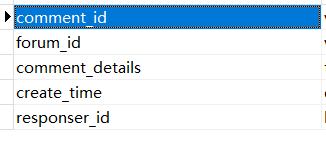数据库exists
EXISTS用于检查子查询是否返回结果,该子查询返回结果为:TRUE/FALSE。也就是说,EXISTS会根据子查询结果的行数返回TRUE/FALSE。
exists对于子查询结果为null的也视为TRUE。前面已经说过EXISTS会根据子查询结果的行数来判断返回TRUE/FALSE。select null 虽然查出来的结果是null但是还是独占行数的,从行数上而言,select null 的结果是true,只是对于exists而言它是这样。
对于EXISTS而言外查询的内容会匹配EXISTS的子查询的内容。
有下面两个表:
FORUM:

COMMENT:

可见forum中的数据是一对多于comment中的。
select * from forum f; /*--等同于 两者都是查询出forum表中的所有数据-*/ select * from forum f where exists(select * from comment );
再看如下:
select * from forum f where exists( select * from comment c from c.forum_id=f.forum_id ); /*--等同于-*/ select f.* from forum f where f.forum_id in( select c.forum_id from comment c where c.forum_id=f.forum_id );
可见exists在某种程度上是和in是等效的。
值得强调的是,exists对于子查询的结果不甚在意,看如下sql
select * from forum f where exists ( select c.comment_id from comment c where f.author_id=c.responser_id ); /*-等同于-*/ select * from forum f where f.author_id in ( select c.reponser_id from comment where c.responser_id=f.author_id );
not exists和exists反着来,情况都一样的,需要注意的是:not exists 会比not in快,原因是not exists的语法通常会查询索引



